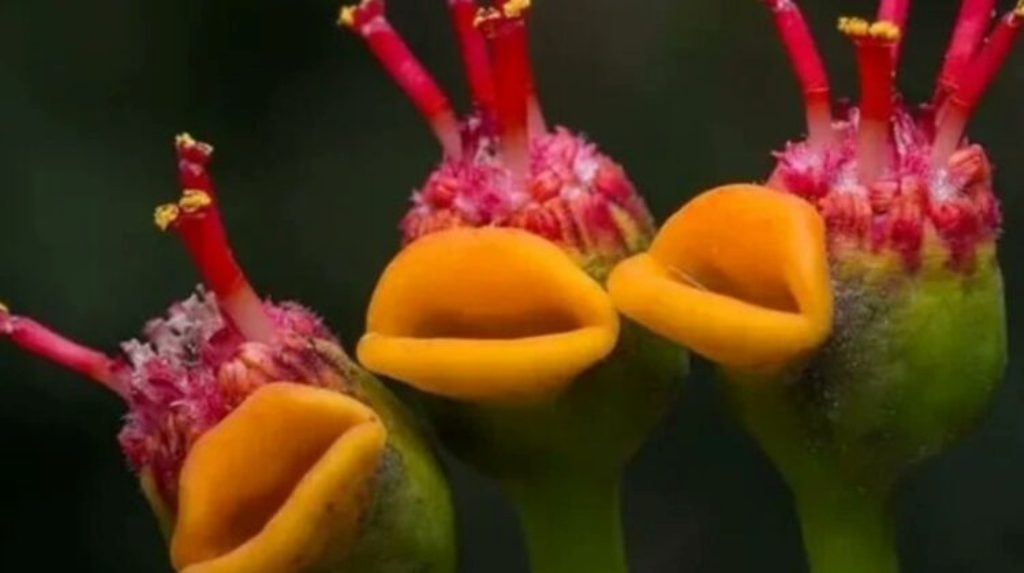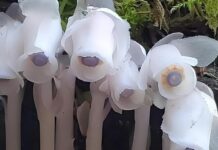Poinsettias (Euphorbia pulcherrima) are a popular flowering plant, particularly during the winter holidays, and are recognized for their eye-catching red and green leaves. Many people, however, are startled to realize that poinsettia blooms are not flowers in the usual sense. Rather, they are strange-looking structures called cyathia, which are made up of a single female flower and multiple male flowers, as well as yellow bulbous glands that mimic lips.
Cyathia are peculiar to the Euphorbia plant family, which includes the poinsettia and many other succulent and cactus-like plants. Cyathia, unlike other flowers, lacks petals and sepals. Instead, they feature a cup-shaped structure called an involucre that covers the flower’s reproductive components.
The involucre of poinsettias is brilliant red and includes numerous yellow glands around the rim. These glands produce a pleasant that attracts pollinators like bees and wasps. Male flowers on short stalks inside the involucre release pollen, which is distributed by visiting insects. In order to receive pollen, the female flower, which is placed in the heart of the involucre, has a long, curving style that reaches upward, above the male flowers.
Surprisingly, the bright red “petals” that we associate with poinsettias are not petals at all. They are bracts, which are modified leaves that surround the cyathia. The bracts are normally red, but depending on the cultivar, they can also be white, pink, or variegated.
Poinsettias may generate healthy seeds despite their unusual reproductive systems. Because they are frequently produced as aesthetic plants, they are normally propagated vegetatively, by stem cuttings or tissue culture.
Lastly, poinsettias are intriguing plants with unusual reproductive organs known as cyathia, which consist of a single female flower and many male blooms, as well as yellow bulbous glands that mimic lips. Poinsettias, while not genuine flowers, may nonetheless attract pollinators and generate viable seeds. So, the next time you encounter a poinsettia, examine its peculiar flower architecture and admire the beauty of this one-of-a-kind plant.
Below are the pictures of this wonderful plant, enjoy and share.











